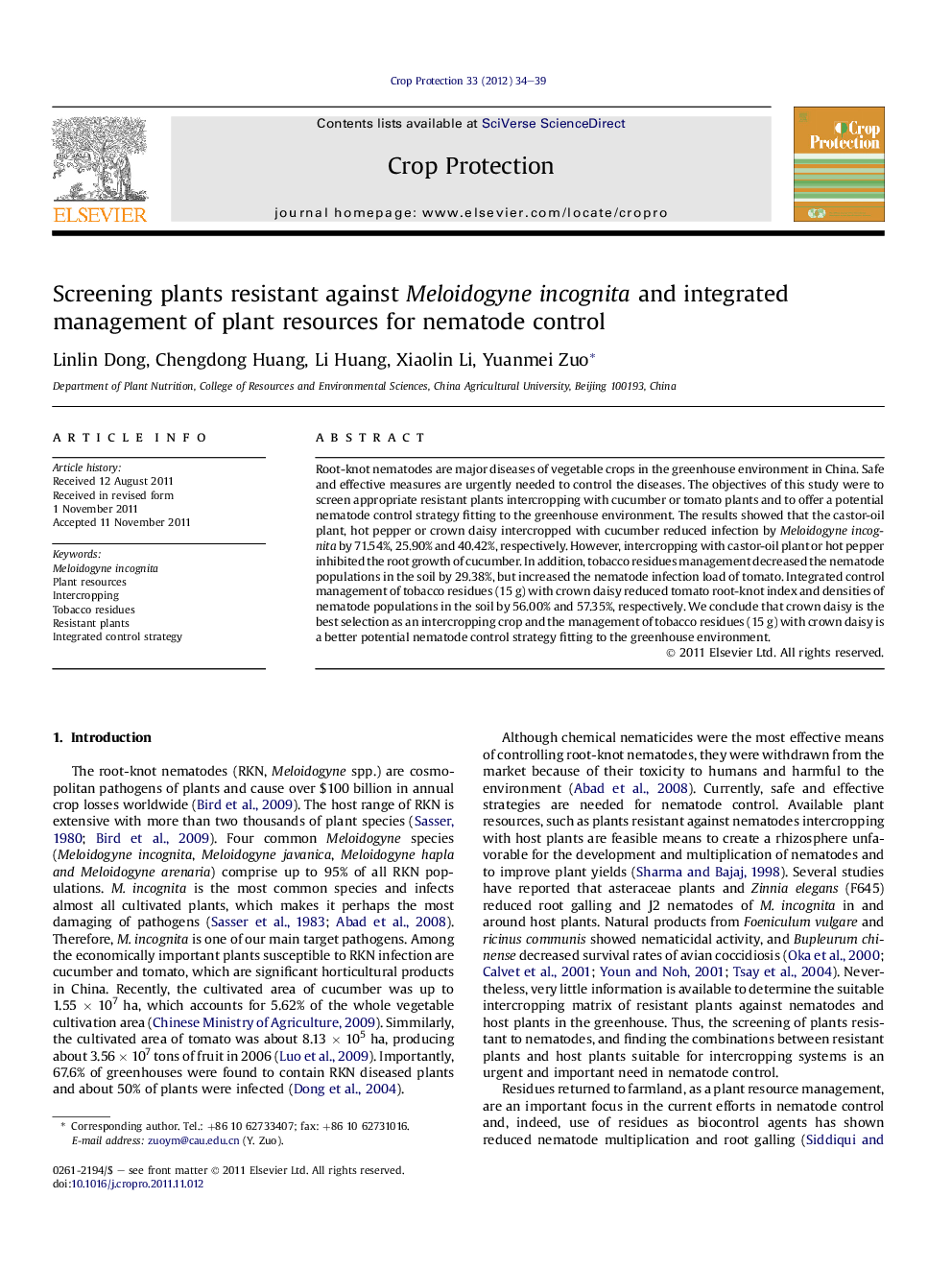| Article ID | Journal | Published Year | Pages | File Type |
|---|---|---|---|---|
| 4506357 | Crop Protection | 2012 | 6 Pages |
Root-knot nematodes are major diseases of vegetable crops in the greenhouse environment in China. Safe and effective measures are urgently needed to control the diseases. The objectives of this study were to screen appropriate resistant plants intercropping with cucumber or tomato plants and to offer a potential nematode control strategy fitting to the greenhouse environment. The results showed that the castor-oil plant, hot pepper or crown daisy intercropped with cucumber reduced infection by Meloidogyne incognita by 71.54%, 25.90% and 40.42%, respectively. However, intercropping with castor-oil plant or hot pepper inhibited the root growth of cucumber. In addition, tobacco residues management decreased the nematode populations in the soil by 29.38%, but increased the nematode infection load of tomato. Integrated control management of tobacco residues (15 g) with crown daisy reduced tomato root-knot index and densities of nematode populations in the soil by 56.00% and 57.35%, respectively. We conclude that crown daisy is the best selection as an intercropping crop and the management of tobacco residues (15 g) with crown daisy is a better potential nematode control strategy fitting to the greenhouse environment.
► Crown daisy is the best selection as intercrops. ► Single management is not appropriate in Chinese greenhouse. ► Integrated management is potential nematode control in Chinese greenhouse.
